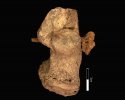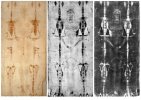Harders
Condemned
variabelwhat`s the distance between footrest and crossbeam?

variabelwhat`s the distance between footrest and crossbeam?
Adjustable for all sizes! Quite practical!variabel
Interesting how large the bulbous end can be to be accommodated by the penetration. but of course we have to be sensible & practical in the interests of safety - though I frequently read about the most amazing large & ill-shaped objects hospitals have to remove from some people whose imagination carries them away into dangerous territory.These are all nice designs and would be used for a woman who is crucified. For a man the design should be modified so that the head of the cornu is bulbous and once it penetrates the anal sphincter, cannot be dislodged, regardless of the victim's movements as he struggles on the cross. When I am hung on the cross the head of the cornu is the size of a small lemon, well greased before insertion. Once lodged deep in the rectum it cannot be expelled and the intense pressure on the prostate usually produces an involuntary spurt of precum. As time goes on you find yourself riding the cornu, both to relieve the aching in your shoulders, arms, chest, hips and legs and to satisfy your primal urges and achieve an orgasm/climax. If there are spectators it becomes a voyeuristic experience. If you are alone with your Dom or Master or Executioner, it is a most private and intimate experience, prolonged by edging, tit play, ball stretching, etc. Of course, release from the cornu has to be done very slowly and carefully, so as not to damage the rectum or anus. A good soak in a warm sitz bath will relieve any soreness and reduce any swelling of the anus.
Interesting how large the bulbous end can be to be accommodated by the penetration. but of course we have to be sensible & practical in the interests of safety - though I frequently read about the most amazing large & ill-shaped objects hospitals have to remove from some people whose imagination carries them away into dangerous territory.
But even when intending eventual death as in Roman times a cornu had to be practicable I think, too large & it would result in serious internal damage. Though I haven't a clue how long it would take to die after a ripped intestine or vagina with all the internal bleeding, anyone have an idea? If the executioners wanted the crucified victim to be up on the cross for a few days then minimum damage would be desirable. But if the intention was for them to be alive on the cross for half a day - twelve hours or so, would a damaging cornu be any particular concern, or indeed part of the designed punishment? It certainly would be another fatal factor in the process. Jesus only lasted six hours, was that the severity of the pre-crucifixion beatings or could he have suffered a rupture internally whilst he was on the cross?
I like the X crossThis is a workshop where we can collect and discuss our own cross designs. You can give photo, manip, drawing or just pure description. It can be a very strange design, even not a cross, but any kind of restraining eqquipment, or it can be a small addition to an existing cross, a kind of cornu, or a method of bounding which you figured out.
Important parameters the plan should contain:
-how it look like
-how it works
-how is the set up, how the crucified would be put there
-what is the "plot" written in the cross, how would the crucified behave from the beginning to the end, stage by stage
-how long the crucifixion would be on this cross (optional)
I think, everything without spikes has no immediate letal effect and the Romans had a lot of experience what is possible and how long it is need to the crucified to pass away. Hetero males often have the fear that reasonable anal penetrations will destroy their sphincter muscle, so for the audience this might be an interesting act to actually suggest the viewers that this actually happens the crucified male or female. Probably the people looking "prolapse porn" are motivated because of that. Btw, I am, also due to my personal experience, convinced that it is healthy to have some regularly massage including anal penetration and I recommend it hetero males also.All valid points. It is doubtful that any lubrication would have been used on the cornu, or in the victim's anus, in historical crucifixions. That, alone would have resulted in damage to both the anus and rectum, not to mention the bowels. Extreme care needs to be taken in contemporary crux scenes. Gay males used to anal intercourse, butt plugs, dildos, fisting, etc. can take a reasonably sized cornu, as long as caution is exercised in insertion and removal. A condemned prisoner, hung naked on the cross, would have had no control over the situation and suffered the awful consequences of rough impalement.
Prostate massage can lead to an amazing orgasm and milking promotes good prostate health.I think, everything without spikes has no immediate letal effect and the Romans had a lot of experience what is possible and how long it is need to the crucified to pass away. Hetero males often have the fear that reasonable anal penetrations will destroy their sphincter muscle, so for the audience this might be an interesting act to actually suggest the viewers that this actually happens the crucified male or female. Probably the people looking "prolapse porn" are motivated because of that. Btw, I am, also due to my personal experience, convinced that it is healthy to have some regularly massage including anal penetration and I recommend it hetero males also.
I wouldn't knowProstate massage can lead to an amazing orgasm and milking promotes good prostate health.
it is not the prostate only, it is the feeling of your sphincter muscle is opened and I am very sensitive between testicles and asshole.I wouldn't know
it is not the prostate only, it is the feeling of your sphincter muscle is opened and I am very sensitive between testicles and asshole.






I have also read about this reference, but this is a doctor who has changed to the profession of priest! That seems to me to be a fundamental problem in all investigations into the Shroud of Turin: Most people who deal with it in detail are either convinced of its authenticity, or they rule out its authenticity from the outset...A British medical expert recently put forward his belief that Christ died from internal bleeding.
He thinks that a fall whilst carrying the cross (the whole cross I would assume - this is grounds for argument I know) caused Jesus to dislocate his right arm. He was then made to carry the cross on his left shoulder but unable to do that with only one arm functioning someone else had to carry the thing.
On the cross his arm was pulled four inches longer which included the main artery serving the arm. With the constant raising & lowering this extended & weakened artery was dragged repeatedly over the ribs until eventually it ruptured & he bled internally to death. It explains the spraying out of blood when his side was pierced after death & no longer with a pumping heart.
It could explain why the right arm is too long on the Turin Shroud. But I do not know what I make of the Shroud's authenticity.
If Christ's arm was dislocated it adds a terrifyingly painful extra to the whole crucifixion story. Imagine having it nailed out wide & then one had only the functioning left arm to haul oneself up with along with one's legs. Every move up & down would be agony in the right shoulder.

This isn't related to The Shroud but...A British medical expert recently put forward his belief that Christ died from internal bleeding.
He thinks that a fall whilst carrying the cross (the whole cross I would assume - this is grounds for argument I know) caused Jesus to dislocate his right arm. He was then made to carry the cross on his left shoulder but unable to do that with only one arm functioning someone else had to carry the thing.
On the cross his arm was pulled four inches longer which included the main artery serving the arm. With the constant raising & lowering this extended & weakened artery was dragged repeatedly over the ribs until eventually it ruptured & he bled internally to death. It explains the spraying out of blood when his side was pierced after death & no longer with a pumping heart.
It could explain why the right arm is too long on the Turin Shroud. But I do not know what I make of the Shroud's authenticity.
If Christ's arm was dislocated it adds a terrifyingly painful extra to the whole crucifixion story. Imagine having it nailed out wide & then one had only the functioning left arm to haul oneself up with along with one's legs. Every move up & down would be agony in the right shoulder.
Have you ever tried it?I like the X cross
You can always tie their ankles to the cross so they are elevated off the floor.Have you ever tried it?
Though easy to make and set up, it’s REALLY hard to provide a sustainable position for fun and games unless your feet are on the floor. Which is cool but not crucifixion!
yes bind my ankles to the cross make me struggle while on the cross very good ideaYou can always tie their ankles to the cross so they are elevated off the floor.

